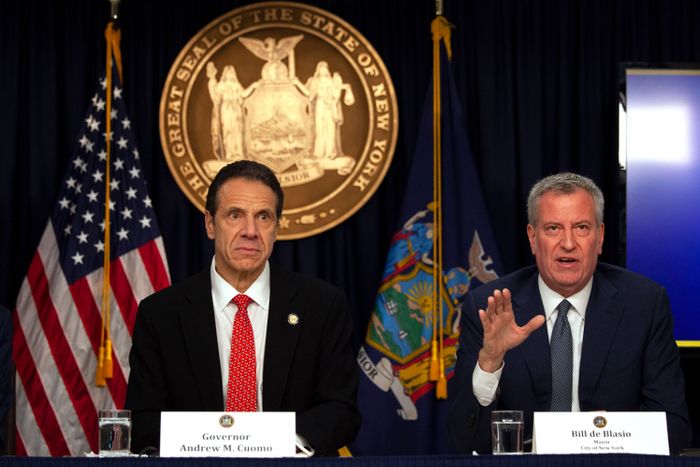By Ese Olumhense and Ann Choi, THE CITY. This story was originally published on April 8 by THE CITY.

Responding to signs that coronavirus is exacting an outsize toll on black and Latino New Yorkers, elected officials are stepping up pressure on Mayor Bill de Blasio and Gov. Andrew Cuomo to disclose details — and act.
On Monday, 10 South Bronx elected officials asked Cuomo to immediately open a multipurpose medical facility at the Harlem River Yards, a waterfront site owned by the state.
Their letter cites THE CITY’s report on an outsize death toll from the Bronx, using city Health Department statistics. As of last Friday, Bronx residents were twice as likely to die of coronavirus as New York City residents as a whole.
The officials, among them veteran Rep. José Serrano, asked Cuomo to establish a rapid testing facility, field hospital, and temporary barracks for medical personnel on the property, currently leased to the Schenectady-based Galesi Group.
“If New York State can not accommodate this request, we ask that you convey the rationale as to why and that you request assistance from the federal government to activate this proposal,” they wrote.
“We fear that a lack of adequate response to COVID-19 in our community will lead to a record number of deaths associated with New York City’s most vulnerable and even further health disparities.”
And it appears the outbreak may be growing increasingly deadly. Not only does The Bronx have the highest number of fatalities as a share of its population of any borough — its death rate is also growing the fastest, THE CITY’s analysis of city Health Department data suggests.
In the Bronx, about 84% of residents are black, Latino or mixed race, Census data show, compared with 39% in Manhattan, the borough with the lowest death rate.
The governor’s office did not immediately respond to THE CITY’s request for comment, nor did the Galesi Group.
“The response I have gotten so far is ‘We will look into what could be possible,’” said Assemblymember Michael Blake (D-The Bronx). “We don’t need people to keep looking into what is possible, we need action.”
‘Affects Us Unevenly’
As of Monday, 679 Bronx residents had been confirmed dead from the virus, according to city health officials, out of a total citywide death toll of 3,202.
Public health experts attribute the elevated rate to a higher incidence of chronic illnesses, like asthma, in the borough. Some officials say lack of testing for the virus in high-risk Bronx neighborhoods may also be to blame.
“COVID-19 affects all of us, to be sure, but it affects us unevenly,” said Bronx Councilmember Ritchie Torres during a Tuesday interview with WNYC’s Brian Lehrer. “Communities of color are the hardest hit. The lowest income communities are the hardest hit. Apart from age, the single greatest risk factor for COVID-19 mortality seems to be racially concentrated poverty.”

Concerns about disparate racial impact have resonated beyond the Bronx.
In other large locales, demographic data has shown that low-income and black and Latino communities are being disproportionately affected: In Chicago, for example, 61 of the 86 deceased — 70% — were black, NPR affiliate WBEZ reported Sunday. Black residents make up less than one-third of Chicago’s population.
In Louisiana, around 70% of the dead are black, the state’s department of health reports, while roughly 33% of the state is black. About 4-in-10 of those dead in Michigan are black, Michigan Radio reports, though 12% of the state is black.
Yet New York City has not yet disclosed the race of those infected or dead, despite steady demands from reporters and officials.
A Call for Info
On Tuesday, Public Advocate Jumaane Williams and Brooklyn Borough President Eric Adams held a virtual news conference to demand a strategy targeted at aiding people and communities of color.
“Some say ‘Well don’t play the race card,’” Adams said. “No — the card is already played when you look at the map and you see the color that shows where this virus has continued to grow.”

In addition to simply collecting and sharing more demographic detail, the two said during the stream, leadership needs to use that data to adjust the response.
“It’s imperative that we look at the data, we adjust what we’re doing and ensure that the resources will go where the greater need is,” Adams said.
On Tuesday, both de Blasio and top Cuomo aide Melissa DeRosa said that statistics about coronavirus patients broken down by race and ethnicity would be made available later this week.
This story was originally published by THE CITY, an independent, nonprofit news organization dedicated to hard-hitting reporting that serves the people of New York.

